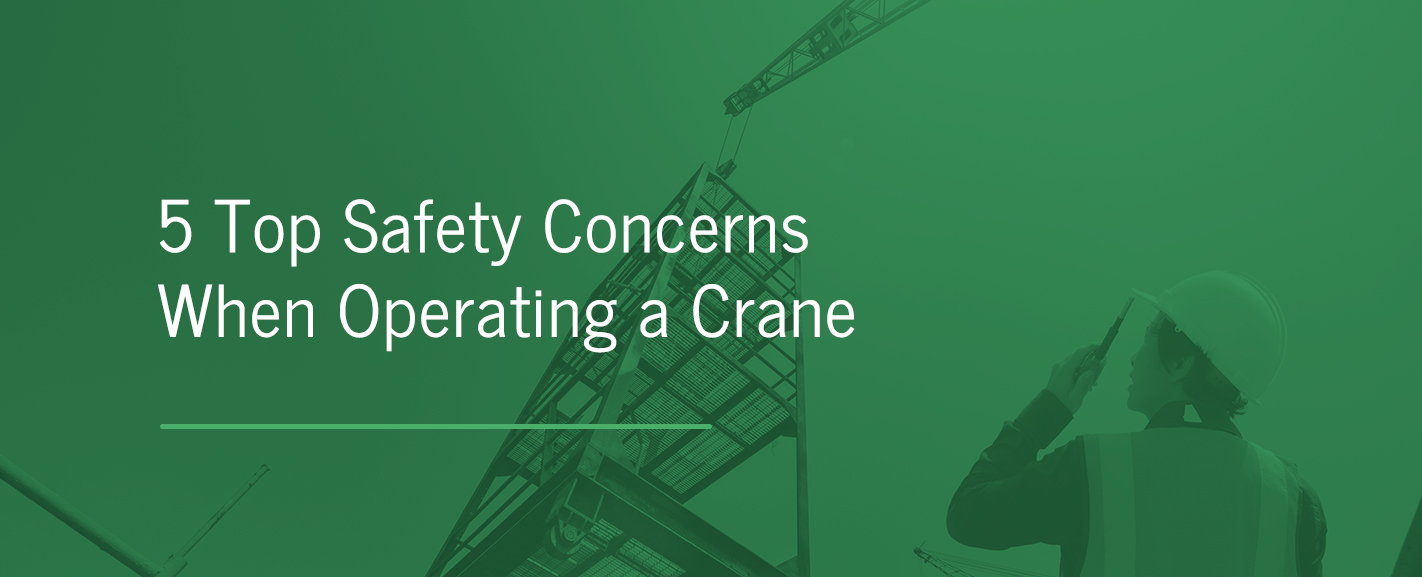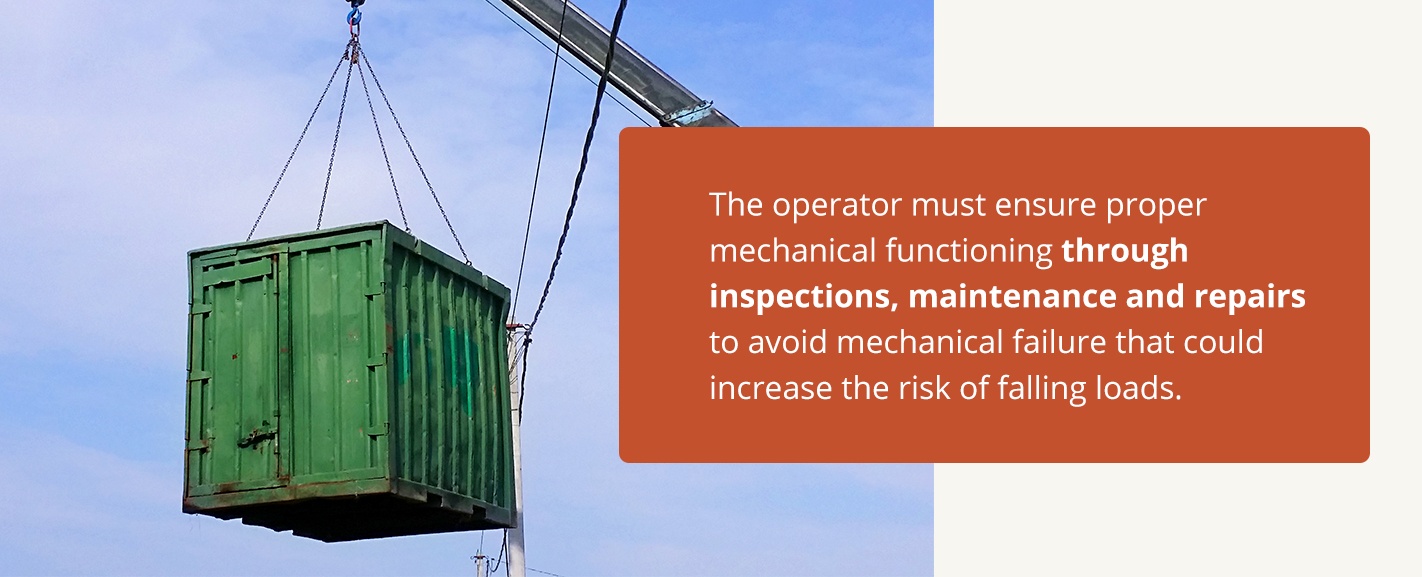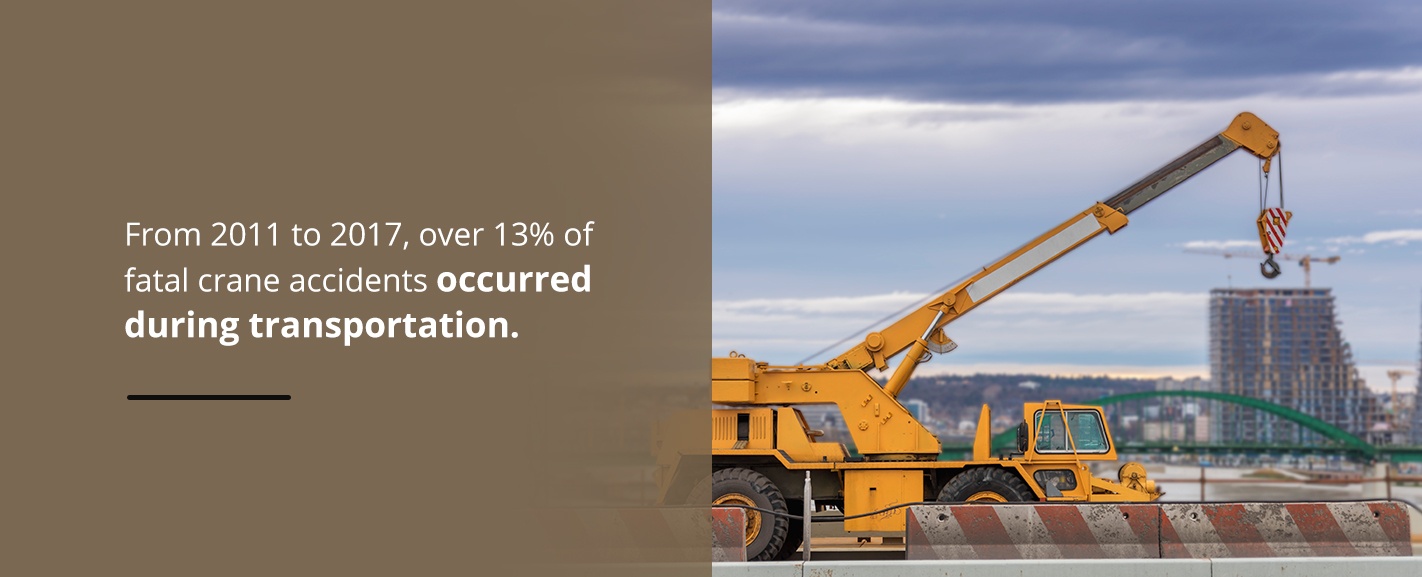Common Crane Safety Hazards
As a pivotal piece of industrial equipment, cranes are powerful hoisting and lifting machines that come with an enormous amount of responsibility to operate safely. Crane operators need extensive training to learn how to control their machinery properly, and they also require unwavering dedication to safety.
All crane operators must understand the most common crane accidents resulting from typical crane safety hazards. Each time a crane is in use, operators must run through a mandatory crane safety checklist to prevent property damage, injury and loss of life.
Common Crane Safety Hazards
Sadly, injuries from working with cranes often result in fatalities. The Bureau of Labor Statistics (BLS) says that from 2011 to 2017, there were 297 fatal crane accidents, for an average of about 42 deaths annually.
Crane incidents can be devastating. As with most industrial incidents, crane accidents typically involve operator error. Operator mistakes happen for many reasons, whether due to improper training, distraction, fatigue or, in serious cases, intoxication from drugs and alcohol. Being aware of the common crane accidents can help minimize operator errors, allowing crews to think and act fast, potentially saving lives.
In addition to using common sense, all operators and crew members must follow crane safety standards defined by the Occupational Safety and Health Administration’s (OSHA) regulations for cranes and crane operators. Here are the top five dangers of working with cranes that all operators and workplace managers should plan and train for:
1. Electrocution
Electrocution is a grave crane safety hazard that crew members should take extremely seriously. All workers, including the operator, are responsible for spotting for electrical hazards. Given the heights that cranes reach, the crane’s boom could make contact with overhead power lines. When this happens, the electrical current can travel along the boom, into the material line and through the tagline, eventually running directly through the worker securing the tagline.
One of the most important safety tips for crane operators to follow is to have local utility technicians mark off overhead lines with safety flags. This improves visibility and hazard awareness for crane operators. Employers must also always establish a safe distance between the crane’s operating site and any power lines. At a minimum, cranes must be handled with 10 feet of clearance from the power line. This distance includes the fully extended load.
2. Falling Loads
When most people think of crane accidents, they imagine a massive load being dropped from the crane at its maximum height. This is a genuine danger of crane operation that all worksite managers need to prepare for.
Falling loads happen for many reasons. Firstly, when the load isn’t properly rigged up or secured to the crane’s load line, the material can slip. If the load isn’t properly balanced, it can offset the machine’s center of gravity, causing tipping. Another possible danger occurs when the primary load line or a tagline is compromised. Without the full support of an intact cable, the load destabilizes, and one or more lines might eventually give way and release the load.
Two-blocking can occur when the operator doesn’t allow for sufficient slack when extending the boom. This results in excessive tension in a cable and causes the load to snap off. Another factor for operators to consider is the weather conditions. When cranes operate in harsh elements, loads that aren’t correctly secured with taglines can become unstable due to the wind’s force and uncontrollable swinging.
A final way for falling loads to happen is when the load is simply over capacity for what the crane is designed to handle. Riggers must follow OSHA regulations for cranes by knowing the load weight and capacity, followed by adequately rigging and shackling the load. Operators also bear the responsibility of smoothly controlling the load to prevent falling.
The operator must ensure proper mechanical functioning through inspections, maintenance and repairs to avoid mechanical failure that could increase the risk of falling loads.
3. Struck-By Hazards
Struck-by hazards are one of OSHA’s fatal four incidents, meaning they are a common and deadly, yet preventable, type of construction accident. With crane operation, the risk of struck-by accidents comes from the crane’s swinging movements. When the crane is either hoisting or moving a load, an unprepared worker may be struck by swinging parts.
The BLS data from 2011-2017 indicates that of the 297 fatalities that occurred within this timeframe, 52% of the deaths involved struck-by incidents. Nearly 27% of these struck-by deaths happened when the worker was hit by a load that fell from a moving crane.
4. Caught-In/Between Hazards
Caught-in/between hazards are another one of OSHA’s fatal four construction accidents. With crane operation specifically, caught-in/between accidents happen when a worker is physically pinned or compressed by the crane’s swinging superstructure or crushed by its moving parts.
Every piece of construction equipment — from a simple skid steer loader to a massive industrial crane — has moving parts, and moving parts create pinch points. The most important step any construction company can take to prevent caught-in/between accidents involving cranes is to provide, teach and enforce two-way radio communication between the operator and ground workers.
Ground workers are most at risk of being compressed in pinch points, so they need to know when the operator begins operating the crane — especially when they start moving its swinging parts or driving it forward or backward.
5. Transportation Incidents
A final and often overlooked danger of working with cranes is the hazard involved in transporting cranes to and from worksites. These incidents are often referred to as the fifth hazard in OSHA’s list of fatal four. Cranes are enormous rigs, often needing to be driven long distances on industrial vehicles to reach their destinations. Crane transportation is a slow and cumbersome process where many things can go wrong, from collisions to runovers to brake failure.
From 2011 to 2017, over 13% of fatal crane accidents occurred during transportation. Oversized loads like cranes are dangerous and can fatally injure workers who aren’t sufficiently trained or aren’t following crane safety standards for transportation.
Trust General Crane for Safe Crane Work
All industrial contractors share a common goal of crane work safety. On construction sites, everyone puts their safety in their fellow workers’ hands, giving each person the responsibility of following their crane safety checklist.
Crane operating requires significant training and experience to prevent all the above dangers, which is why DIY crane operation is strongly discouraged. Sadly, in many fatal cases, the primary causes of injury were attributed to inexperienced crane operators. For this reason, all contractors must know the value of hiring an experienced crane company with certified crane operators. Using the services of a professional crane company limits your liability, protects your business financially, prevents property damage and, above all, saves lives.
Trust your next crane job to a full-service crane company. Choose General Construction Crane Services, Inc., for your next crane rental. We provide impeccably maintained cranes, and you’ll also benefit from our highly trained and certified operators who have an impressive incident-free safety record. Call us today at 860-528-8252 or contact us online for a quote for full-service crane rentals in New England.







